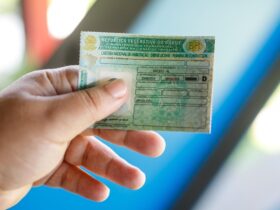It is essential to know the traffic code to drive safely. Many Spaniards do not know some signs of traffic and confuse others. Are these.
There are drivers who do not know some traffic signals, as is the case with these blue signals that are basic. But they are not the only ones. There are other strangest to see and too many Spaniards confuse them. Let’s see what indicates.
It is self -evident to drive correctly, It is essential to know the traffic code and the meaning of each of the traffic signals That we can find on the road.
Traffic signals They serve to warn, indicate or prevent drivers about what they should do and what is forbidden. In the road network we can find hundreds of signals.
Some are well known, because we are more familiar with them, because we see them frequently. However, The same does not happen to others who are not so common and many Spaniards do not know themlike the signs P-5, P-6, P-7 and P-8 from DGT.
Confused traffic signals by many Spaniards
First, it should be remembered that traffic signals are grouped Four categories:
- Preventive: They warn the drivers about a danger they will find later, such as closed curves, narrow bridges or school areas. In turn, they are divided between those who indicate a physical danger and those that indicate a critical danger.
- Informative: Report on services, destinations or distances. Usually, they are placed in areas where it is more difficult to access information by other means, such as in tourist areas.
- REGULATORY: They set a ban or restriction. They are the circular signals with a white background and red edge.
- TRANSIENT: They report on temporary works or situations on the road, such as deviations.
We did this clarification, we must remember the meaning of certain signals that many Spaniards confuse. This is the P-5, P-6, P-7 and P-8 signals.
- P-5: Danger to approaching a bridge that can be raised or rotated, temporarily interrupting the circulation. It is represented by a triangle with a white background and red edge, with the icon of a growing bridge.
- P-6: Danger due to approaching a crossing with a tram line, which has a priority of crossing. It is represented by a triangle with a white background and red edge, with the icon of a barrier.
- P-7: Danger due to the approach of a level step provided with barriers or semi -residual. It is represented by a triangle with a white background and red edge, with the icon of a train.
- P-8: Danger due to the approach of a level step that is not provided with barriers or semi -bears. It is represented by a triangle with a white background and red edge, with the icon of a train.
P-5, P-7 and P-8 signals are always accompanied by another signal, P-9 or P-10 (respectively right and left side) indicated by proximity of a level of level, mobile bridge or spring.
It is a vertical lighthouse, white, with red lines diagonally. May have three, two or line, according to proximity:
- Three rows: Indicates proximity.
- Two rows. Indicates the approach.
- A line: Indicates close.
In this regard, it is convenient to clarify the difference between proximity, approximation and proximity:
- Proximity: Indicates that the driver is close to a marked danger.
- Approach: The driver approaches the signed danger, which is at least two thirds of the distance between him and warning the danger.
- approach: The driver is almost on a marked danger.
Other signs that confuse many Spanish drivers
In another order of things, there are signs that many drivers confuse, because they are very similar. A very clear example is the R-308 and R-309 signals, which indicate different hypotheses in the parking areas.
R-308 forbids parking on the roadside where they are. It has a circular shape with blue background and red edge, crossed by a diagonal red line. In turn this signal has different variations:
- R-308a: prohibit the parking of strange days.
- R-308b: Prohibits the parking of the uniform days.
- R-308c: Prohibits parking in the first week of the month.
- R-308d: Prohibit the parking of the second half of the month.
- R-308e: Prohibits parking in front of a Ford
From his part, The R-309 signal indicates that it is allowed to park but with a limited durationSo the driver must specify the parking time through a ticket. It has a white background that difference from R-308. None of these two traffic signs prohibit stop.
In the end, There are areas where it is forbidden to park because there are spaces activated for loading and unloading goods. These signals are accompanied by a program in which you cannot park, but it is allowed outside that program.
Generally, signals specify that parking is reserved on working days between 8:00 and 20:00, including Saturday. So, before parking in these areas, you must make sure of the programs allowed. The fine for unjustified parking in a loading and unloading area can reach 200 euros.
Know How we work in Autobed.
Tags: DGT, road safety, traffic












Got a Questions?
Find us on Socials or Contact us and we’ll get back to you as soon as possible.